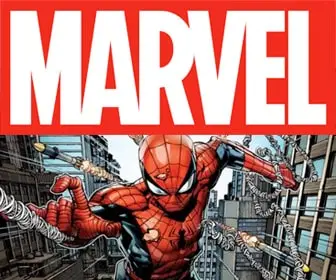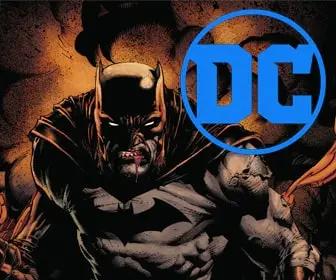
A brief overview of the presence and role of female characters in DC Comics.

DC Comics, one of the largest and oldest American comic book companies, has been at the forefront of championing powerful female characters in the realm of superheroes and villains. These characters have taken on various roles ranging from supporting cast members to central figures, showcasing a breadth of complexity and depth in their narratives. They have played pivotal parts in shaping the direction and tone of numerous story arcs and have often stood shoulder to shoulder with their male counterparts, challenging and breaking gender stereotypes. From the invincible Wonder Woman to the intriguing Harley Quinn, DC Comics has provided an inclusive space for female representation, empowering women through its wide array of inspiring, multifaceted, and strong female characters. These characters have not only expanded the DC universe but also enriched the comic book culture and influenced the broader popular culture.
In the early years of DC Comics, women often played supporting roles, typically as love interests or damsels in distress. Characters like Lois Lane, who debuted in 1938 as Superman’s love interest, were often characterized by their relationship to the male superheroes. Despite being a journalist and frequently shown as intelligent and determined, Lois’s primary function was often to be saved by Superman. This trend of female characters was prevalent throughout the golden age of comics (1930s-1950s), with women often portrayed in traditional roles or as characters who needed rescuing. However, even during these early years, there were standout exceptions that hinted at the evolution to come. Wonder Woman, created by William Moulton Marston in 1941, was one such exception, symbolizing power, independence, and justice. She was a significant step forward in the representation of women in comic books, setting a precedent for future female characters in the DC Universe.
Wonder Woman: The Pioneer

Wonder Woman’s creation in the early 1940s by psychologist William Moulton Marston marked a significant departure from the conventional depiction of women in comics. Marston, a staunch supporter of women’s rights, wanted to introduce a new kind of superhero – one that would triumph not through physical strength alone, but through love, wisdom, and fairness. Alongside his co-creators, including his wife Elizabeth Holloway Marston and artist H.G. Peter, Marston brought forth a character that was both a powerful warrior and a compassionate diplomat, shattering the typical damsels-in-distress narrative.
Throughout her evolution, Wonder Woman has often served as a reflection of the times. During World War II, she was a patriotic symbol, fighting against the Axis powers. In the second-wave feminist era of the 1960s and 70s, she broke barriers by appearing on the inaugural cover of Ms. Magazine, and the storyline saw her lose her superpowers to live among humans as a modern woman. Despite controversy over the depowering storyline, it established Diana as a figure of resilience, proving that she did not need superhuman abilities to be a hero. Subsequent writers and artists built upon this foundation, developing a complex, multifaceted character that continually pushed against societal expectations.

The cultural impact of Wonder Woman is undeniable. As one of the earliest female superheroes and the most iconic, she has influenced generations of comic book readers and creators alike. Wonder Woman’s enduring appeal lies in her embodiment of empowerment and truth. She is proof of the power of diverse representation in media and has paved the way for the introduction of other strong female characters in the DC Universe. As a feminist icon, a superhero, and an ambassador of peace, Wonder Woman continues to inspire with her courage, integrity, and compassion.
Batgirl and Oracle: The Resilient
Barbara Gordon, daughter of Gotham City’s police commissioner James Gordon, started her journey in the DC Universe as Batgirl, another iconic female character. However, her character’s narrative took a dramatic turn in Alan Moore’s controversial 1988 graphic novel “The Killing Joke,” where she was paralyzed from the waist down by the Joker. Instead of ending her heroic career, the traumatic event marked the beginning of a new chapter for Barbara, one that was ground-breaking in terms of its representation of disability in comics.

Transitioning from Batgirl to Oracle, Barbara became a vital source of information and guidance for superheroes across the DC Universe, using her intelligence, expertise in information technology, and strategic thinking to fight crime. Her character was unflinchingly portrayed as someone who did not let her disability define her or limit her capabilities. This transition represented an act of resilience, showcasing her determination and mental strength. Barbara Gordon’s journey from Batgirl to Oracle broke barriers in the comic industry, offering a representation of disability that highlighted ability and adaptability over physical limitations. She remains a powerful symbol of resilience and resourcefulness within the DC Universe, underlining the fact that not all heroes wear capes; some wield the power of knowledge and information.
Harley Quinn: The Anti-Hero

Harley Quinn’s evolution in the DC Universe is a truly unique narrative arc. She was initially introduced as the Joker’s love-struck sidekick and henchwoman in “Batman: The Animated Series,” reflecting the persona of a woman completely enthralled by her toxic relationship with one of Gotham’s most notorious villains. Harley’s character was a deeply complex exploration of mental health and the debilitating impacts of an abusive relationship, displaying both the magnetism and devastation of her relationship with the Joker.
However, as the series evolved, so did Harley Quinn. In more recent narratives, Harley breaks free from the Joker’s manipulation and takes control of her own destiny, redefining herself as an anti-hero. This transformative journey from villain to anti-hero showcased not only her personal growth and emancipation but also provided a nuanced perspective on mental health, trauma recovery, and the power of self-determination. Harley Quinn’s journey resonates with readers, offering a unique narrative of personal evolution amidst chaos and hardship, underlining her character’s multifaceted depth in the broader DC Universe.
Black Canary, Hawkgirl, and Others: The Essential Support
Black Canary and Hawkgirl are two such characters in the DC universe who, while not as mainstream as Wonder Woman or Batgirl, have made substantial contributions to the storyline and characterization of DC’s pantheon of characters. Their influence extends beyond their individual narratives and has far-reaching effects on the larger DC universe, providing readers with complex, layered characters to explore and appreciate.
Black Canary, also known as Dinah Lance, is a character defined by her independence, martial arts skills, and her sonic scream, the ‘Canary Cry.’ Beyond her physical prowess, Dinah is a character of strong moral conviction and leadership. She is a long-time member, and often leader, of the Birds of Prey, a mostly female superhero team. Dinah’s determination, courage, and resourcefulness, as well as her complex relationships with Green Arrow and the other members of the Justice League, make her a powerful representation of female strength and resilience.
Hawkgirl, primarily known as Shiera and Kendra Saunders, brings an even more unique dynamic to the DC universe. Known for her distinctive Nth metal wings and weaponized mace, Hawkgirl is a formidable warrior. But it’s her unique reincarnation narrative that sets her apart. As a character who is continuously reincarnated across time and space, Hawkgirl provides fascinating storylines related to destiny, reincarnation, and identity. Hawkgirl’s character explores the complexities of a woman continually reborn, adapting to new lives and circumstances, making her a character of great depth and complexity.
Female characters in DC Comics, including Wonder Woman, Batgirl, Black Canary, and Hawkgirl, have not only played crucial roles within the narrative universe but have also significantly influenced readers and the comic book industry as a whole.
By creating strong, multifaceted female characters, DC Comics has made strides in promoting gender equality in an industry that was historically male-dominated. These characters have acted as symbols of female empowerment, inspiring readers of all genders. For example, Wonder Woman’s strength, resilience, and dedication to justice have been influential in shaping societal perceptions of what a female hero can be. She stands as an enduring symbol of empowerment, embodying qualities that many readers aspire to, regardless of gender.
Similarly, the character arc of Barbara Gordon from Batgirl to Oracle has provided representation for individuals with disabilities, showing that one’s potential and capabilities are not defined by physical limitations. This narrative has had a profound effect on readers who identify with this experience and has also helped to raise awareness of the need for more diverse representation in comic books.
Black Canary and Hawkgirl, though less mainstream, have also left indelible marks on the comic book industry. Black Canary’s moral conviction, leadership, and resilience have made her a fan favorite and a role model for many readers. Hawkgirl’s unique narrative of reincarnation has introduced complex themes of destiny, identity, and self-discovery that resonate with many fans.
These characters’ stories have also had an impact on the comic book industry by showing the importance and success of diverse character representation. Their popularity has driven demand for more female-centric narratives, pushing publishers to create more characters that reflect diverse experiences.
References and Further Reading
Here are some resources that you can check out if you’d like to learn more about these amazing female characters in DC Comics:
- Comic Books: The best way to understand these characters is by reading their comic books. Here are a few notable ones:
- “Wonder Woman: The Hiketeia” by Greg Rucka
- “Batgirl/Oracle: Year One” by Scott Beatty and Chuck Dixon
- “Black Canary: Kicking and Screaming” by Brenden Fletcher
- “Hawkgirl: Hawkman Returns” by Geoff Johns
- Graphic Novels: These are collections of comic books that tell a more complete story. Consider:
- “Wonder Woman: Earth One” by Grant Morrison
- “Batgirl: The Darkest Reflection” by Gail Simone
- “Black Canary: Bloodspell” by Paul Dini
- “Hawkman: Rise of the Golden Eagle” (Hawkgirl features prominently) by Geoff Johns
- DC Universe Infinite: This subscription service provides access to thousands of DC comics.
- Books:
- “Wonder Woman Unbound: The Curious History of the World’s Most Famous Heroine” by Tim Hanley
- “The Many Lives of the Batman: Critical Approaches to a Superhero and His Media” by Roberta E. Pearson (This book includes a study on Batgirl).
- Online Communities: Websites like Reddit, Comic Vine, and DC Universe have forums where fans discuss characters and storylines.
- Documentaries/Films:
- “Wonder Women! The Untold Story of American Superheroines”
- “The History of the Batgirl”, a YouTube documentary.
Remember, each reader’s journey is unique, and there are many different versions and interpretations of these characters. Enjoy exploring their stories!










